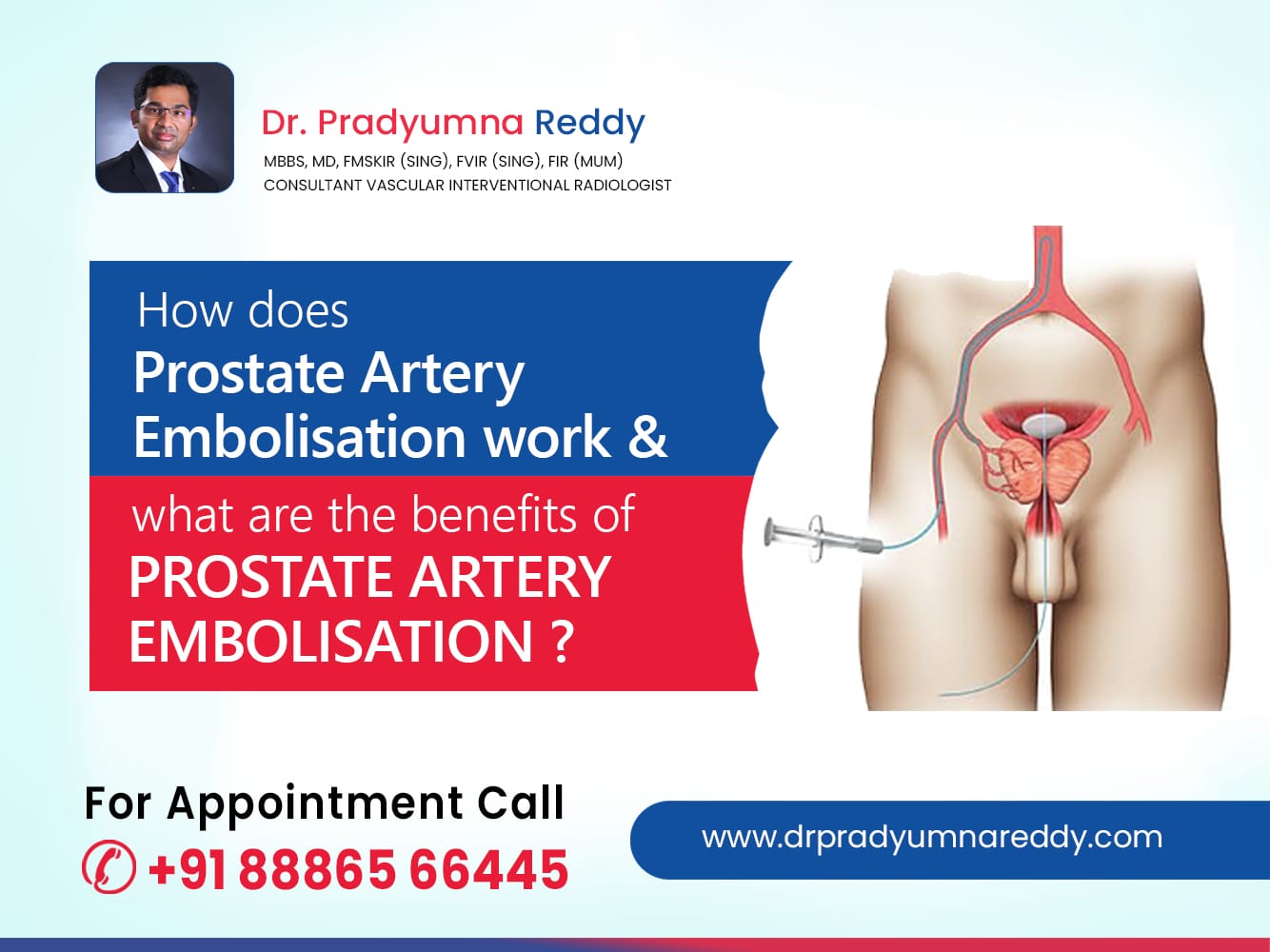Prostatic Artery Embolization (PAE) is a minimally invasive procedure used to treat the signs caused by benign prostatic hyperplasia (BPH). BPH is the enlargement of the prostate gland and is one of the common non-cancerous tumours in men. BPH can cause urinary tract signs such as weak urine stream, increased urination at night, difficulty in emptying the bladder, etc. All these signs can cause discomfort and can have an impact on your quality of life. Prostatic Artery Embolization (PAE) is a popular treatment method for BPH.
What is Prostate Artery Embolization (PAE)?
The PAE procedure will be performed by an interventional radiologist who makes use of imaging tests to view the inside of your body and treat the condition. The procedure involves sending tiny particles into the arteries that supply blood to the prostate. This will reduce the size of the prostate and eventually shrinks the prostate. The entire procedure can take up to 3 hours based on the location and size of the prostate.
Who Can Undergo PAE Procedure?
Patients who are not willing to undergo traditional surgery or who do not qualify for traditional surgery can undergo the PAE procedure. To determine if you are suitable for the PAE procedure, the interventional radiologist conducts tests such as:
- Urine test
- Digital rectal exam to know the size of your prostate
- A prostate-specific antigen (PSA) test to rule out other causes of your signs such as prostate cancer
- An ultrasound of the prostate gland
The interventional radiologist will also ask about your signs, their severity, and how much they are impacting your life.
If you qualify for the PAE procedure, you will be given instructions to be followed before the procedure. You should ensure to follow all the instructions given by your doctor.
What Happens During Prostate Artery Embolization (PAE)?
Before performing the PAE procedure, you will be given local anesthesia through IV medication to reduce your discomfort during the procedure. The interventional radiologist inserts a thin catheter into the blood vessel either through the wrist, groin, or upper arm. Now, the catheter is guided towards the blood vessels that supply blood to the prostate. For this, an arteriogram is performed to map to the blood vessels that supply blood to the prostate.
Once the catheter is positioned, tiny round microspheres are injected into the catheter and into the blood vessels that supply blood to the prostate. This will block the blood flow to the prostate. After treating one side of the prostate, the interventional radiologist will move the catheter to the other side. Then, the same steps will be repeated. Once the procedure is completed, the prostate will eventually shrink and will relieve your signs within a few days of the procedure.
What Happens After PAE?
As the PAE procedure does not remove a part of the prostate, the results of the procedure are not visible immediately. You may have some pain and discomfort for about a week following the procedure. But it gets resolved within a week. It takes up to a month to start noticing the results. The results will continue to improve for up to 6 months.
Over 90% of men who had PAE procedures have seen improvement in their signs and has improved their quality of life.
What Benefits Do Prostate Artery Embolization Offer?
The following are the benefits of the prostate artery embolization (PAE) procedure:
- It is a minimally invasive procedure
- Results can be seen within a few weeks
- Less to no pain and discomfort during the procedure
- Faster recovery
- No general anesthesia
- No risk complications such as urinary incontinence, sexual dysfunction, impotence, and retrograde ejaculation
- Improves quality of life
Meet Dr Pradyumna Reddy Today for Prostate Artery Embolization (PAE) Procedure
If you have been suffering from the signs of BPH and want to undergo PAE to get rid of your signs, meet Dr Pradyumna Reddy today. He has helped several patients suffering from BPH and helped improve their signs. He adopts a patient-centric approach and this sets him unique from other interventional radiologists. He understands that going through a radiology procedure can make you nervous. But Dr Pradyumna Reddy ensures to make you feel as comfortable as possible. To book your appointment, give us a call or your can fill out the online form.






